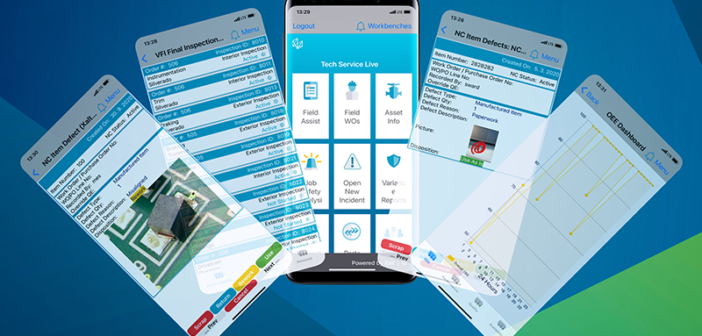Watch the product demonstration from the EMO Milano 2021 exhibition here:
Our customers often tell us that they spend a massive amount of time on non-value added work, especially on maintenance activities like looking for tools, instructions and parts. Individually these little tasks might seem insignificant, but when you add them together a lot of time can be wasted.
Do you know how much tool time you have compared to the total time it takes to get something back up and running?
From our customer research, we’ve made a list of the most common of these challenges OEMs deal with on a day-to-day basis.
- Data needed for repairing or working on machines is scattered through the organisation.
- Workorders get lost, don’t get turned in when done, are illegible, require paper and computer filling in.
- Priorities are fixed, communication is poor.
- Specialised “tribal knowledge” with team members, additional downtime due to expert busy or not available.
- Long time spent tracking down maintenance staff or long response times to get maintenance over to the machines.
- No real process or protocols for fixing things, no process to document work being done.
- High turnover of junior technicians, slow training curves.
- Reliance on senior technicians for the success of junior employees.

Luckily, there are more and more apps specifically for manufacturers aimed at solving these issues. The benefits of these are enormous. Just to name a few, there are visual manuals, real-time data updates, enhanced training, better resource management, work order management, data storage and analysis and things like safety compliance. Added together this can have a great cumulative effect.
Hexagon’s smart platform for manufacturing is a good example on how to enable lightweight integration plugins to customised service-based solutions that deliver business value to customers. Adopting mobile apps for manufacturing may seem small, but this is a major shift.
With this platform OEMs can eliminate a great deal of non-value-added work:
- Skilled staff spend more time doing skilled work.
- Consolidate workflows, accessing data from disparate enterprise systems like ERP, historians, document management, SCADA, etc.
- Eliminate paper, scanning and duplicate data entry.
- Drive the right actions in the right places through real-time insights.
- Generate instant feedback loops: interdepartmental and cross-departmental.
- Improving technicians’ collaboration and response times with push notifications.
- Ensure compliance and process adherence.
- Empower junior technicians faster and increase the utilization of field technicians.
- Bridge the gap between junior and senior technicians with step-by-step digital workflows.














